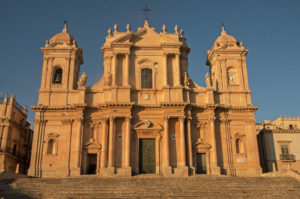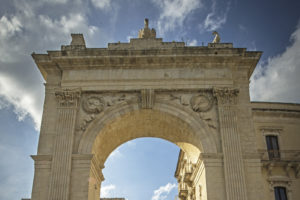Built over half a century by the best architects, stonemasons and master builders, the city of Noto is a harmonious ensemble of homogeneous colours, a Baroque city assembled by volumes, lines and perspectives, defined by UNESCO as “representing the culmination and final flowering of Baroque art in Europe”. The intervention of the architect Angelo Italia was fundamental in organising the city space in that with the creation of splendid scenographic effects, he transformed squares and streets into stages and theatre flats.
The element that makes this city so magnificent and harmonious is the use of local white limestone, which, with the passing of time and the effect of the sun, has been tinged with golden and pink shades, made even more vivid by the light of sunset that rests on the corbels, capitals, friezes and columns. It was called “the stone garden” by the famous restoration expert
Cesare Brandi
.



The choice of white limestone as the main element in the reconstruction of the city of Noto was dictated by the quarries surrounding the area, which facilitated its extraction and transport to the city.
Limestone is also soft and easy to work, and so it is still used by stonemasons and craftspeople to create imaginative and complex shapes today. This said, at the same time, it is a fragile and delicate stone that requires constant care and restoration.